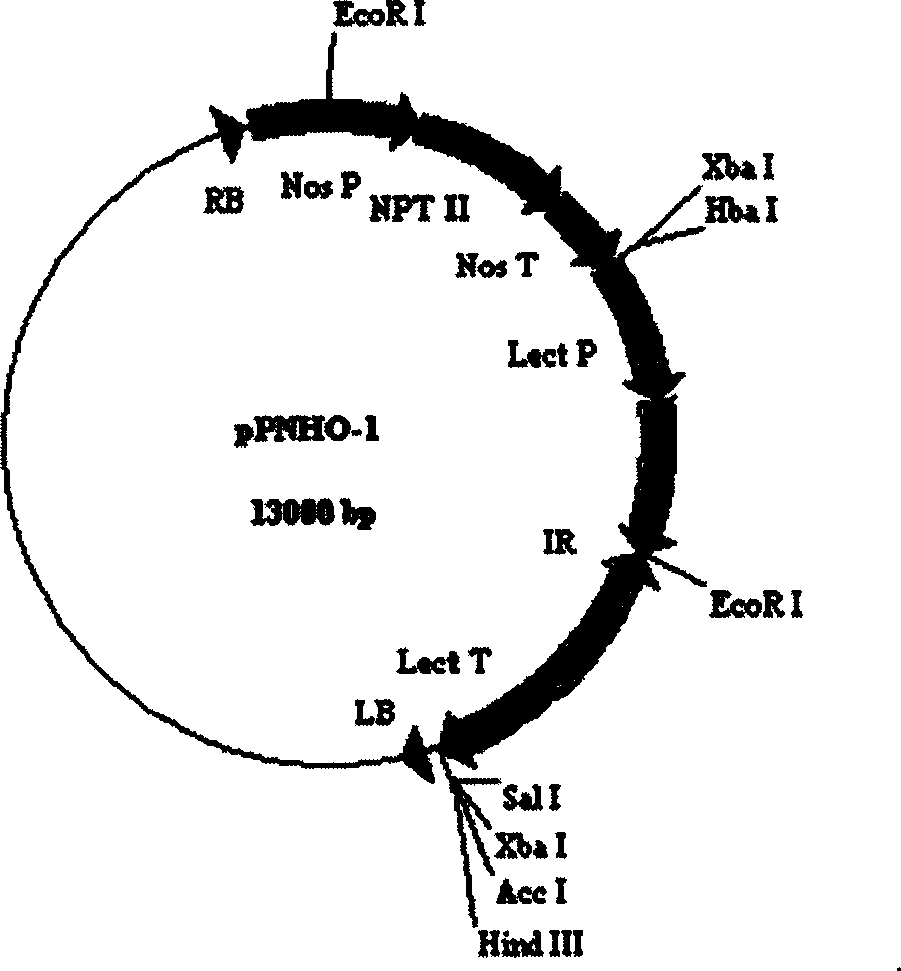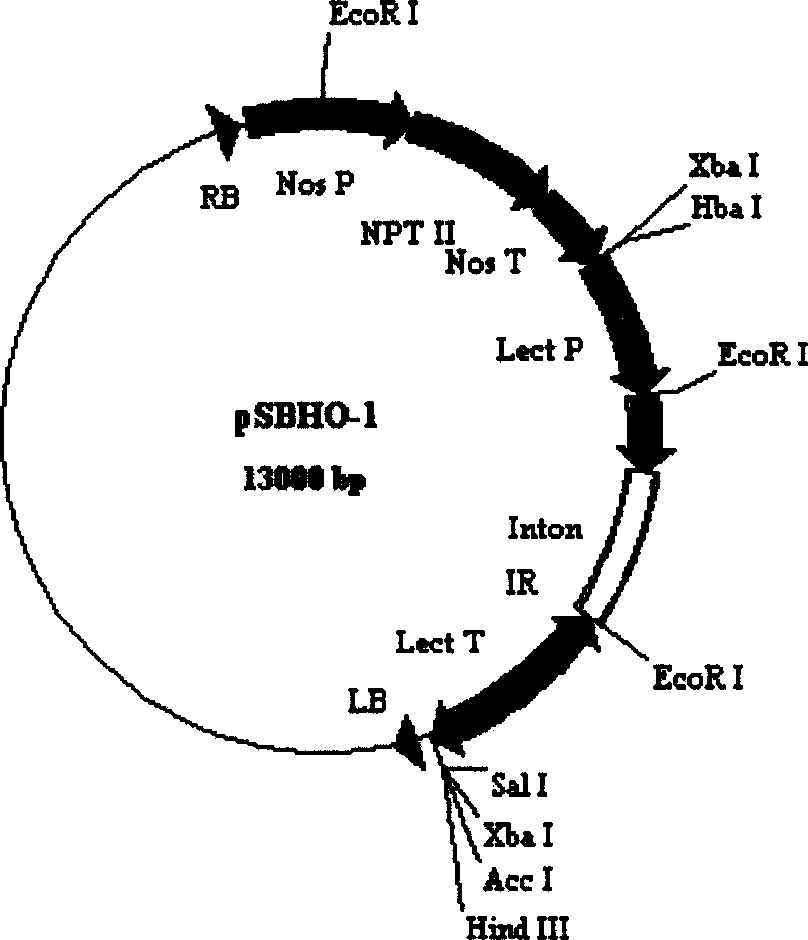Method in increasing oleic acid content of soybean and peanut seed by applying gene silent technology
A technology of gene silencing and peanut, applied in botany equipment and methods, biochemical equipment and methods, applications, etc., can solve the problems of reducing the synthesis of linoleic acid and reducing catalytic activity, so as to increase the content of oleic acid, shorten the cycle, The effect of improving efficiency
- Summary
- Abstract
- Description
- Claims
- Application Information
AI Technical Summary
Problems solved by technology
Method used
Image
Examples
specific Embodiment approach
[0010] Take the application of gene silencing technology to increase the content of oleic acid in peanut seeds as an example:
[0011] 1. Materials used
[0012] Peanut material: The peanut varieties are Fenghua No. 1, Hehua No. 1 and 8130.
[0013] Strains and plasmids: Escherichia coli E.coli-DH5α, Agrobacterium LBA4404; cloning vectors pGEM-Teasy, pBI121 and pGLe-10.
[0014] Enzymes and chemical reagents: plant genome extraction kit; plasmid extraction kit, DNA restriction enzyme, T4DNA ligase, T4DNA polymerase, CIAP calf intestinal alkaline phosphorylase, pfu polymerase and DNA ladder; antibiotics ( Kanamycin, etc.) and other biochemical reagents.
[0015] 2. Technical methods
[0016] Cloning of FAD2-1 Gene Fragment and Construction of Expression Vector
[0017] Total DNA was prepared from peanut material and used as template for polymerase chain reaction (PCR). Two sets of PCR primers were designed with reference to the peanut FAD2-1 gene (AF272950) in GeneBank, an...
PUM
 Login to View More
Login to View More Abstract
Description
Claims
Application Information
 Login to View More
Login to View More - R&D
- Intellectual Property
- Life Sciences
- Materials
- Tech Scout
- Unparalleled Data Quality
- Higher Quality Content
- 60% Fewer Hallucinations
Browse by: Latest US Patents, China's latest patents, Technical Efficacy Thesaurus, Application Domain, Technology Topic, Popular Technical Reports.
© 2025 PatSnap. All rights reserved.Legal|Privacy policy|Modern Slavery Act Transparency Statement|Sitemap|About US| Contact US: help@patsnap.com



